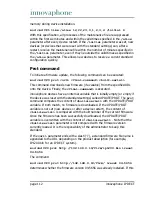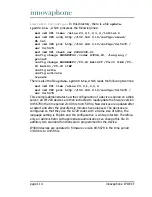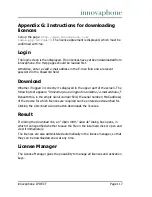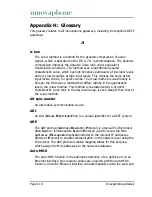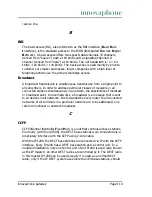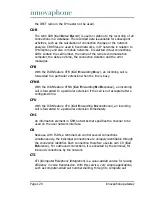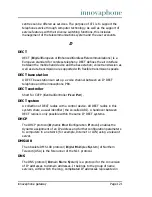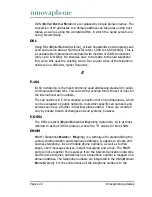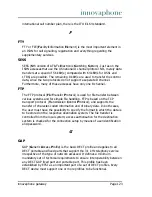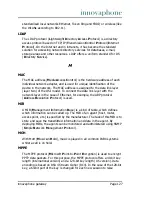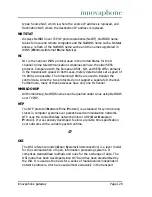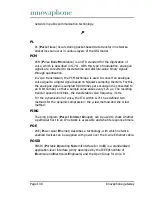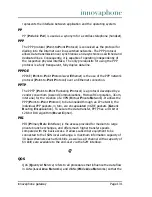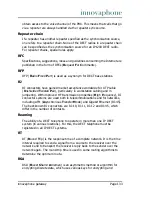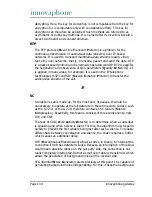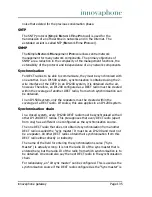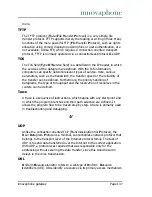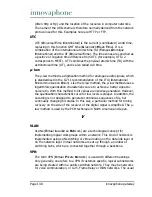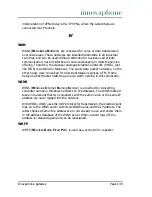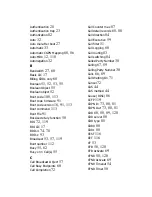
Page 126
innovaphone gateway
base station as the sync master.
ISDN
ISDN (
I
ntegrated
S
ervices
D
igital
N
etwork) was conceived as a
communication network for voice transmission (recognisable from the
transmission speed of 64 kbit/s), and has emerged from the analogue
telephone network. The digital transmission enables text, graphics and voice
data to be handled in the same way. Just as in the analogue telephone
network, ISDN uses line switching, and a transparent, physical, end-to-end
connection is set up if necessary. The result is virtually a physical line
between the communicating end-subscribers, which is switched through in
the individual ISDN exchanges.
ITU
The ITU (
I
nternational
T
elecommunication
U
nion) is an organisation
operating worldwide, in which governments and the private
telecommunications sector coordinate the setting up and operation of
telecommunication networks and services.
J
Jitter
Jitter refers to the phase fluctuations in data transmission, and therefore
changes in time of signal frequencies. It concerns fluctuations of fixed points
in time, for example, the time when a digital signal passes from one signal
amplitude to another. Jitter occurs especially with high frequencies and can
result in data losses. The causes of jitter are noise and crosstalk,
interference, signal edge distortion and minimal level fluctuations.
K
L
LAN
A LAN (
L
ocal
A
rea
N
etwork) usually spans a distance of up to 10 km,
although there are networks that can cover much larger distances. It is
normally implemented as a diffusion network and achieves transfer rates of
up to 10 Gbit/s (10 Gigabit Ethernet). LANs can be wired (like the

